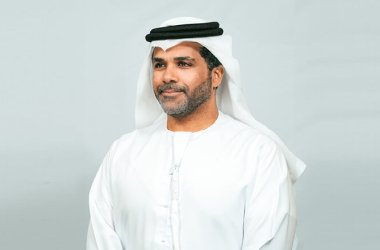Abdulmajeed Harmoodi, VP Engineering and Development at Khazna Data Centers , tells Anita Joseph how AUH 6 is a cornerstone of Khazna’s Future First Strategy, focusing on innovation, sustainability, and resilience.

How does the modular and repeatable structure of AUH 6 enhance construction efficiency and performance?
The modular and repeatable structure of AUH 6 allows us to streamline the building process and maintain consistent quality across our facilities. This approach enables faster deployment of data center capacity to meet the growing demand, reducing time to market. Each module is prefabricated to precise specifications, ensuring high standards of construction, and minimizing onsite work. This not only accelerates the build time but also reduces construction waste and lowers costs. Additionally, the modular design allows for easier scalability and future expansions, ensuring that we can quickly adapt to increasing data requirements without major overhauls. As a result, AUH 6 was completed in a mere 19 months, a testament to Khazna’s dedication to progress.
In what ways does AUH 6 align with Khazna’s Future First Strategy and its sustainability ambitions?
AUH 6 is a cornerstone of Khazna’s Future First Strategy, which emphasizes innovation, sustainability, and resilience. The data center incorporates cutting-edge technologies and design principles that reduce environmental impact and enhance operational efficiency. Our sustainability ambitions are reflected in AUH 6 through the use of renewable energy sources, such as the integrated solar plant in Masdar City, and advanced cooling solutions that lower energy consumption. By focusing on sustainable practices, AUH 6 supports Khazna’s goal to lead the market in eco-friendly data center operations, reducing our carbon footprint and promoting a greener future.
In constructing the AUH 6, Khazna employed the innovative DFMA (Design for Manufacture and Assembly) methodology. In pursuit of this methodology, Khazna established an onsite workshop dedicated to creating its own DFMA module. This enabled the fabrication and delivery of essential components like pipework and cable trays directly to the construction site, streamlining the building process. Streamlining production processes reduces energy consumption during manufacturing, contributing to overall sustainability efforts.
Furthermore, the exterior design of AUH 6 was thoughtfully engineered to shield the structure from the harsh impact of direct sunlight. This design approach effectively mitigates heat ingress into the building, further enhancing the data center’s efficiency and sustainability.
Can you describe the internationally recognized sustainability standards to which AUH 6 has been designed and constructed?
AUH 6 has been designed and constructed to meet several internationally recognized sustainability standards, ensuring it operates with minimal environmental impact. The facility adheres to the LEED (Leadership in Energy and Environmental Design) Gold certification, which is a globally recognized symbol of sustainability achievement and leadership. This certification covers aspects such as energy efficiency, water use, indoor environmental quality, and materials selection. Additionally, AUH 6 complies with the Uptime Institute’s Tier III standards for data center design and operation, ensuring high levels of reliability and efficiency while maintaining sustainable practices.
How do the innovative technologies employed in AUH 6 contribute to operational efficiency and the reduction of carbon emissions?
At AUH 6 the use of advanced cooling systems, such as adiabatic cooling, significantly lowers the energy required for temperature control, which is crucial in the hot climate of the UAE. The integration of renewable energy sources, including a dedicated solar plant, reduces reliance on traditional power sources and cuts down greenhouse gas emissions. Furthermore, the deployment of energy-efficient IT infrastructure and power management systems ensures optimal performance with lower energy consumption. These technologies collectively contribute to a substantial reduction in the carbon footprint of AUH 6, aligning with Khazna’s commitment to sustainability.
What impact does the new Dubai Universal Blueprint for AI plan have on Khazna’s position in the datacenter sector, and how does AUH 6 play a role in this context?
The new Dubai Universal Blueprint for AI plan positions the region as a global leader in artificial intelligence and digital innovation. This initiative amplifies the demand for robust, scalable, and efficient data center infrastructure to support AI applications and smart city projects. Khazna is well-positioned to meet these demands with facilities like AUH 6, which are designed to handle the high-density computing and large-scale data processing required by AI technologies. AUH 6’s advanced infrastructure, sustainable design, and strategic location within Masdar City make it an ideal hub for AI development and deployment. By providing reliable, high-performance data center services, AUH 6 supports the AI blueprint’s goals and strengthens Khazna’s leadership in the sector.





